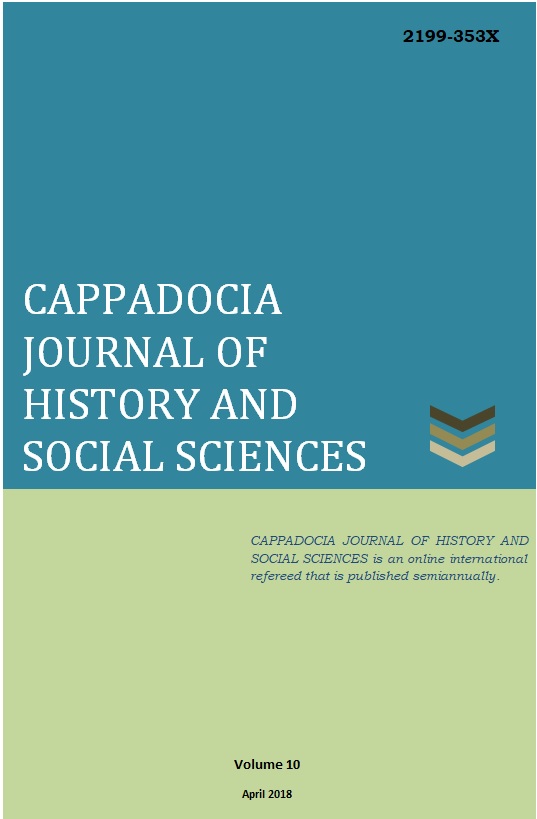Author :
Abstract
Bugün Kosova Devleti’nin başkenti olan Priştine, Osmanlı fethi öncesi Sırpların, Arnavutların ve Vlahların yaşadığı, köylülerin üretmiş oldukları mallarını pazarladıkları bir yerdir. Priştine, Osmanlı Devleti tarafından fethedilmeden önce Vuk Brankoviç’in oğlu Georg Brankoviç tarafından yönetilmekteydi. İlk dönem Osmanlı kaynaklarında Trepçe, Zveçan, Vılçıtrın, Prizren ve Üsküp’ün yanı sıra Priştine’nin de içinde bulunduğu bölge Vılk-ili adıyla anılmıştır. Bu şehirler, 1392 yılında fethedilen Üsküp hariç, Fatih Sultan Mehmed’in 1455 tarihli ikinci Sırbistan seferiyle fethedilmiş ve bu tarihten itibaren başta şehir merkezlerinde olmak üzere iskân ve dolayısıyla da İslamlaşma süreci başlamıştır. Fetihten sonra Vılk-ili’nin tahriri yapılmıştır. Bu tahrir sonucunda “Defter-i Vilayet-i Vılk” başlığı ile bölgenin tahrir defteri hazırlanmıştır. Vılçıtrın sancağına bağlı olan Priştine kazası kadı tarafından yönetilen bir yerleşim birimidir. Bölgenin fethedilmesinden Fatih Sultan Mehmed devrinin sonlarına kadar yapılan tahrirler sonucunda günümüze bölge ile ilgili pek çok bilgi ulaşmıştır. Kayıtlara göre Fatih Sultan Mehmed devrinin sonlarına doğru Priştine; Vılçıtrın sancağına bağlı altı nahiyeden bir tanesi olup, zeametle tasarruf edilen, dokuz mahallesi ve bir pazarı olan şehir merkezidir. Bu çalışmada Başbakanlık Osmanlı Arşivi’nde bulunan, Vılçıtrın sancağına ait 1455 ve 1477 tarihlerinde tutulmuş olan tahrir defterlerinden edinilen bilgiler doğrultusunda; Priştine kazasının demografik, ekonomik ve askeri özelliklerinden bahsedilecektir.
Keywords
Abstract
Prishtine, currently the capital of Kosovo State, was a marketing point for the villagers where they sell their products to Serbs, Albanians and Vlahs living there. Prishtine was headed by Georg Brankoviç, Vuk Brankoviç’s son, before it was conquerred by the Ottoman State. According the initial period Ottoman resources the region including Trepçe, Zveçan, Vılçıtrın, Prizren and Skopje as well as Prishtine was called Vılk province. Except Skopje, which was conquerred in 1392, these cities were conquerred during the second Serbia campaign of Fatih Sultan Mehmed in 1455. And upon this event, a period of population and therefore Islamisation was launched specifically at the city centers. After the conquest, the population registry of Vılk-province was performed. As a result of this, the cadastral record books of the region have been created under the name of “Defter-i Vilayet-i Vılk”. The town of Prishtine which was connected to Sanjak of Vılçıtrın, is a residential place headed by the Kadı (Muslim Judge). As a result of population registers conducted after the conquest of region until the end of Fatih Sultan Mehmed era, lots of information has been gathered about the region up-to-now. According to registers, Prishtine was of the six towns connected to Sanjak of Vılçıtrın, with nine quarters and a market place administered in a feudal structure through the end of Fatih Sultan Mehmed era. The study analyzes the demographical, economic and military aspects of Prishtine town in accordance with the data gathered from the cadastral record books included in the Prime Ministerial Ottoman Archives about the region, arranged between 1455 and 1477.
Keywords
- B. Araştırma Eserler ARIKAN Zeki, ―Tahrir Defterlerinde Geçen Deyimler‖, Osmanlı Araştırmaları, C. XVI, (1996), ss.
- (1987), ss. 269–97. AYVERDI Ekrem Hakkı, Avrupa’da Osmanlı Mimari Eserleri III (Yugoslavya), Ġstanbul: Ġstanbul
- Fetih Cemiyeti Yayınları, 2000. BELDICEANU Nicoara, XIV. Yüzyıldan XVI. Yüzyıla Osmanlı Devleti’nde Tımar, çev. Mehmet Ali
- Kılıçbay, Ankara: Teori Yayınları, 1985. BILGE Sadık Müfit, ―Macaristan‘da Osmanlı Hakimeyitinin ve Ġdari TeĢkilatının KuruluĢu Ve
- GeliĢmesi‖, OTAM, C. 11, (2000), ss. 33–81. DELILBAġI Melek, Muzaffer ARIKAN, Suret-i Defter-i Sancak-ı Tırhala I, Ankara: Türk Tarih
- Kurumu, 2001. EMECEN Feridun M., ―Defter-i Köhne: Pirlepe-Kırçova Kesiminin En Eski Timar Defteri (1445
- 1455)‖, Osmanlı Araştırmaları, C. 43, (2014), ss. 341–474. ———, Osmanlı İmparatorluğu’nun Kuruluş ve Yükseliş Tarihi (1300 - 1600), Ġstanbul: Türkiye ĠĢ
- Bankası Kültür Yayınları, 2015. ———, ―Sosyal Tarih Kaynağı Olarak Osmanlı Tahrir Defterleri‖, Tarih ve Sosyoloji Semineri,
- Ġstanbul: Edebiyat Fakültesi Basımevi, 1990. HADZIBEGIC Hamid, Adem HANDZIC, EĢref KOVACEVIC, Oblast Brankovica Opsirni
- Katastarski Popis iz 1455 Godine II, Sarejevu: Orijentalni Institut u Sarajevu, 1972. HINZ Walther, İslâm’da lçü S stemler , çev. Sev m Acar, Ġstanbul: Edeb yat Fakültes Basımev , ĠNALCIK Halil, ―Köy, Köylü ve Ġmparatorluk‖, Osmanlı İmparatorluğu Toplum ve Ekonomi,
- Ġstanbul: Eren Yayıncılık, 2009. ———, ―Mehmed II‖, Kuruluş Dönemi (1302 - 1481) Osmanlı Sultanları, Istanbul: ĠSAM Yayınları,
- 2015, ss. 181–226. ———, Osmanlı İmparatorluğu’nun Ekonomik ve Sosyal Tarihi, ed. Halil Ġnalcık, Donald Quataert,
- Istanbul: Eren Yayıncılık, 2000. ———, Suret-i Defter-i Sancak-i Arvanid, II. Baskı., Ankara: Türk Tarih Kurumu, 1987. ĠNBAġI Mehmet, ―Makedonya‘da Bir Türk ġehri: Üsküp (XV-XVI‘ncı Yüzyıllar)‖, XIV. Yüzyıldan
- Genelkurmay Basımevi, 2012, ss. 157–76. ———, Osmanlı İdaresinde Üsküb Kazası (1455-1569), Atatürk Üniversitesi, 1995. KIEL Machiel, ―PriĢtine‖, Diyanet Vakfı İslam Ansiklopedisi, 2007, C. 34, ss. 346–48. KONUK Neval, Mehmet Zeki ĠBRAHIMGIL, Kosova’da Osmanlı Mimari Eserleri I, Ankara: Türk
- Tarih Kurumu, 2006. OSMANLI ARġIVI DAIRE BAġKANLIĞI, 167 Numaralı Muhâsebe-i Vilâyet-i Rûm-ili Defteri (937
- - 1530) II, Ankara: T.C. BaĢbakanlık Devlet ArĢivleri Genel Müdürlüğü, 2004. ÖZ Mehmet, ―Tahrir Defterlerindeki Sayısal Veriler‖, Osmanlılarda Bilgi ve İstatistik, ed. Halil
- Ġnalcık, ġevket Pamuk, Ankara: DĠE Yayınları, 2000, ss. 17–32. ÖZTÜRK Necdet, Mevlânâ Mehmed Neşrî Cihânnümâ, Ġstanbul: B lge Kültür Sanat, 2013. SELÇUK Hava, Osmanlı İdaresinde Priştine, Konya: Çizgi Kitabevi, 2016. TAġKIN Ünal, Osmanlı Devleti’nde Kullanılan lçü ve Tartı Birimleri, Fırat Üniversiyesi, 2005.





